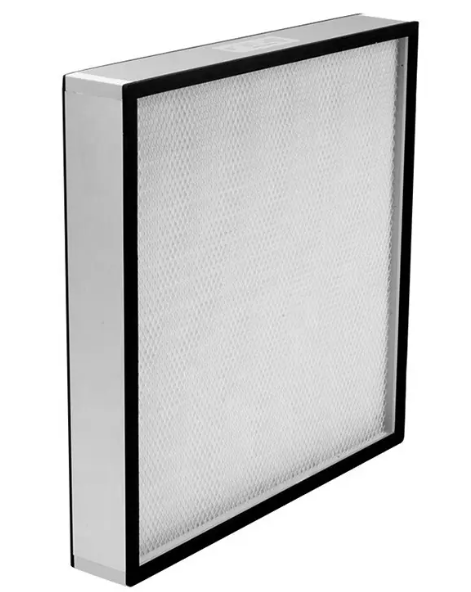
HEPA (High efficiency particulate air Filter) means high-efficiency air filter. The characteristic of HEPA mesh is that air can pass through, but fine particles cannot pass through. The removal efficiency of particles with a diameter of more than 0.3 microns can reach more than 99.97%, and it is the most effective filter medium for pollutants such as smoke, dust and bacteria.
HEPA is divided into five materials: PP (polypropylene) filter paper, glass fiber, composite PP/PET filter paper, melt-blown polyester non-woven fabric and melt-blown glass fiber. Among them, PP (polypropylene) filter paper is paper and cannot be washed.
The gap between the fibers of the HEPA filter is large, which is much larger than the diameter of the blocked particles. So how does the HEPA filter filter the particles?
Mainly rely on the adsorption of fibers to “stick” the particles. The diameter of the fibers is about the same as that of the particles, and the “mesh” space between the fibers is larger, and the “wide” space between the fibers allows the airflow to pass smoothly. However, due to the layer-by-layer arrangement, the fine particles inevitably collide with a fiber that is intertwined in a disorderly manner, thereby being adsorbed. At this microscopic scale, the intermolecular force between the fibers and the dust particles is enough to overcome the influence of the airflow and “adhere” the two together, thereby achieving the purpose of intercepting particles.
So over time, the gaps between the fibers of the HEPA filter will become smaller and smaller, and some gaps will disappear completely. Although the filtration efficiency of the filter screen will not decrease, the wind resistance of the filter screen will increase, resulting in a decrease in air volume and an increase in noise. As a result, the HEPA filter screen must be replaced regularly.
HEPA filter rating
HEPA filters are mainly used in automobiles, air purifiers, fresh air systems, clothing care machines and other products, and their grades are subdivided into: G1-G4, F5-F9, H10-H14 and U15-U17, common in air purifiers It is the H grade, and the HEPA of this specification belongs to the high-efficiency filter.
The higher the HEPA level, the higher the one-time filtration rate, but the higher the level, the greater the wind resistance, the louder the noise, and the more expensive the cost. Household filter products are in the H11~H12 grade, and H13 has high single-pass filtration efficiency, but the wind resistance will also be large, so the air output of the air purifier will also be affected.
